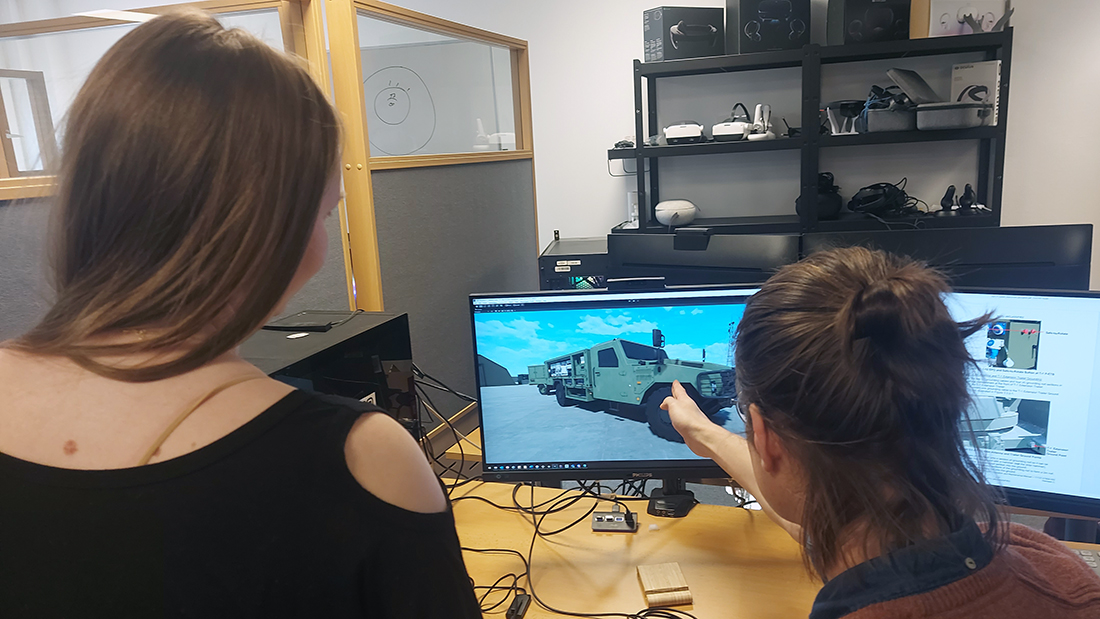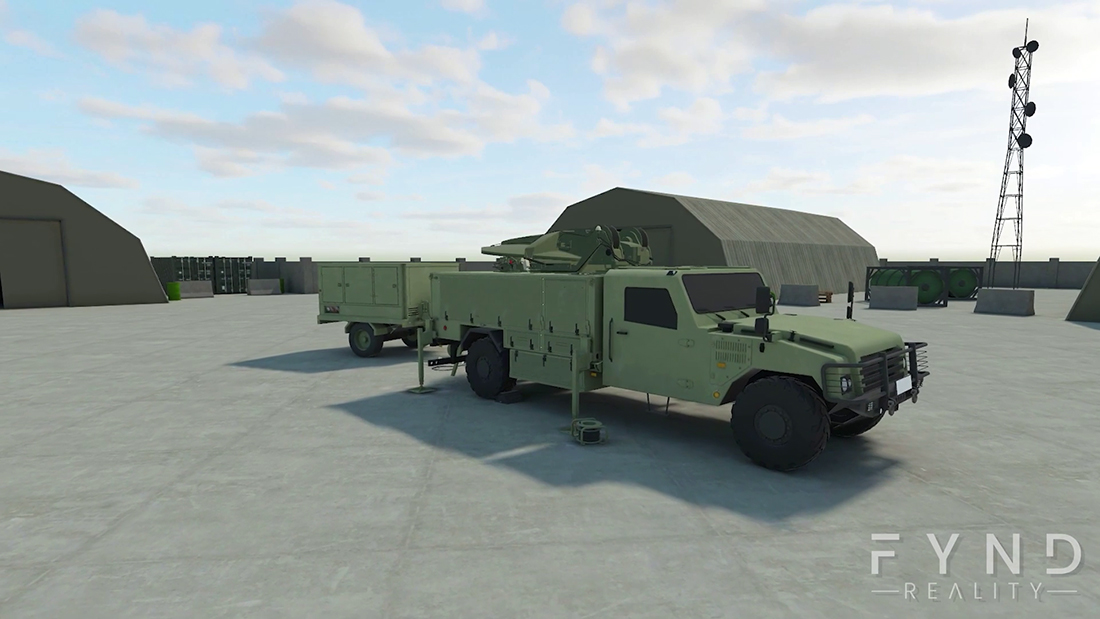"There is no doubt that we were in the right place at the right time when we studied at Hamar. Personally, I felt that we were part of one of Norway's leading AR/VR environments. There was a real buzz around the programme in the start-up phase, and we as students were lucky to have a role in kick-starting the initiative. Since then, this academic environment has grown both at INN University and in Hamar year after year. What happens in Hamar is of international quality," say our two former students Ole Midthun and Silje Kroken.
The two completed the programme Virtual Reality and Augmented Reality. in the spring of 2018. While Midthun previously had a bachelor's degree in computer science from a UK institution and experience in 3D, Kroken continued straight from having studied a bachelor's degree in animation and digital art at INN University. They had a common wish to enroll in a future-oriented programme in order to acquire competence in combining digital tools, techniques, methods and forms of expression linked to creative processes in VR and AR production. Now they both work at Fynd Reality.

Smooth transition to working life
"We were approximately 25 students in the first admission cycle, and about half of us got a job at Fynd Reality after completing our studies (the company was called EON at the time). For us, it was a kind of smooth transition from further education to working life, since we largely continued on the same projects as during our studies. We created our own workplace in many ways," explains Kroken.
As students at the INN University's Game School, they had the opportunity to use a lot of equipment that VR depends on. In addition, in the second semester they received relevant practical experience, which involved work on three projects related to the business that was to become their future workplace.
"I worked on a project related to crisis preparedness. In addition, I developed a separate AR app aimed at secondary school students for SpareBank 1 Østlandet and a mobile app for security training of airport personnel," says Midthun.

Working with digital learning in the Armed Forces
But it is not only in Hamar that offers good opportunities for getting a relevant job in AR/VR after completing one's studies. Bjørnar Børsheim is part of the second admission cycle who completed the programme the year after Ole and Silje. He first worked at Sykehuspartner as a course developer, where he was given responsibility for starting up an environment for the development of courses in VR. He now works with digital learning as a senior consultant at the Norwegian Armed Forces at Sessvollmoen garrison.
"Gaining insight into how useful 3D and animation were in other subject areas than games was the most valuable aspect for me during my studies. More than anything else, I wanted a future job that would be creative and exciting, as well as strengthen my opportunities in the labour market," says Børsheim.

In the Armed Forces, Børsheim works on producing e-learning, which largely builds on what he learned in the programme and worked with at Sykehuspartner. There, among other things, he was responsible for training new employees in so-called scenario-based learning, which included training in how to interact with drug addicts and respond to overdoses. In the Armed Forces, he is working on digitizing existing courses, which entails many cost-saving gains.
"'How can we use VR technology here?' is a question I always get at job interviews, and it feels good that I have studied something that has given me unique competence and has enabled me to answer this in a meaningful way. It is noticeable that in working life there is a lot of curiosity and interest in AR and VR, and I want to be part of this journey," says Børsheim, who previously also studied animation and digital art.
In Fynd Reality, both Midthun and Kroken work with programming, with two slightly different approaches. The latter works with so-called UI design, HTML and CCS, as well as concept and modeling tasks. She is also involved in character design and work related to the dialogue simulator. Midthun works more with the actual user interaction in VR – how one interacts with the world, for example.
"Recently, among other things, I have worked a lot with a procedural training tool for NATO. They wanted to create a digital twin of a satellite communication tool, so that personnel could have an interactive and functional training procedure in VR. There are many advantages to using VR for such training. It allows for volume training, does not require traveling and moving equipment, and it removes the risk of destroying expensive equipment," says Midthun.

Wish to work with problem solving
The three former INN University students share a common desire to work with virtual solutions to practical challenges in the future. The pandemic has opened up new forms of meeting, and Børsheim mentions virtual meeting arenas as a field of interest that is open to innovation. He would like to be able to work with, for example, virtual viewings as a replacement for physical viewings in relation to home purchases.
Midthun and Kroken, who work only a stone's throw from INN University's campus in Hamar, do not rule out that as technology develops, they may apply to return to INN University if a relevant master's degree is created. But the most important thing is that they both get to be part of a company that pushes the boundaries of what VR can be used for.
"Personally, I now have a lot more foundational skills in the form of practical experience than when I graduated, which will be useful when working on a potential master's thesis. We are keeping ourselves updated, and several people here have talked about combining work with studies," says Midthun.
This article was translated from Norwegian by Noorit Larsen.



